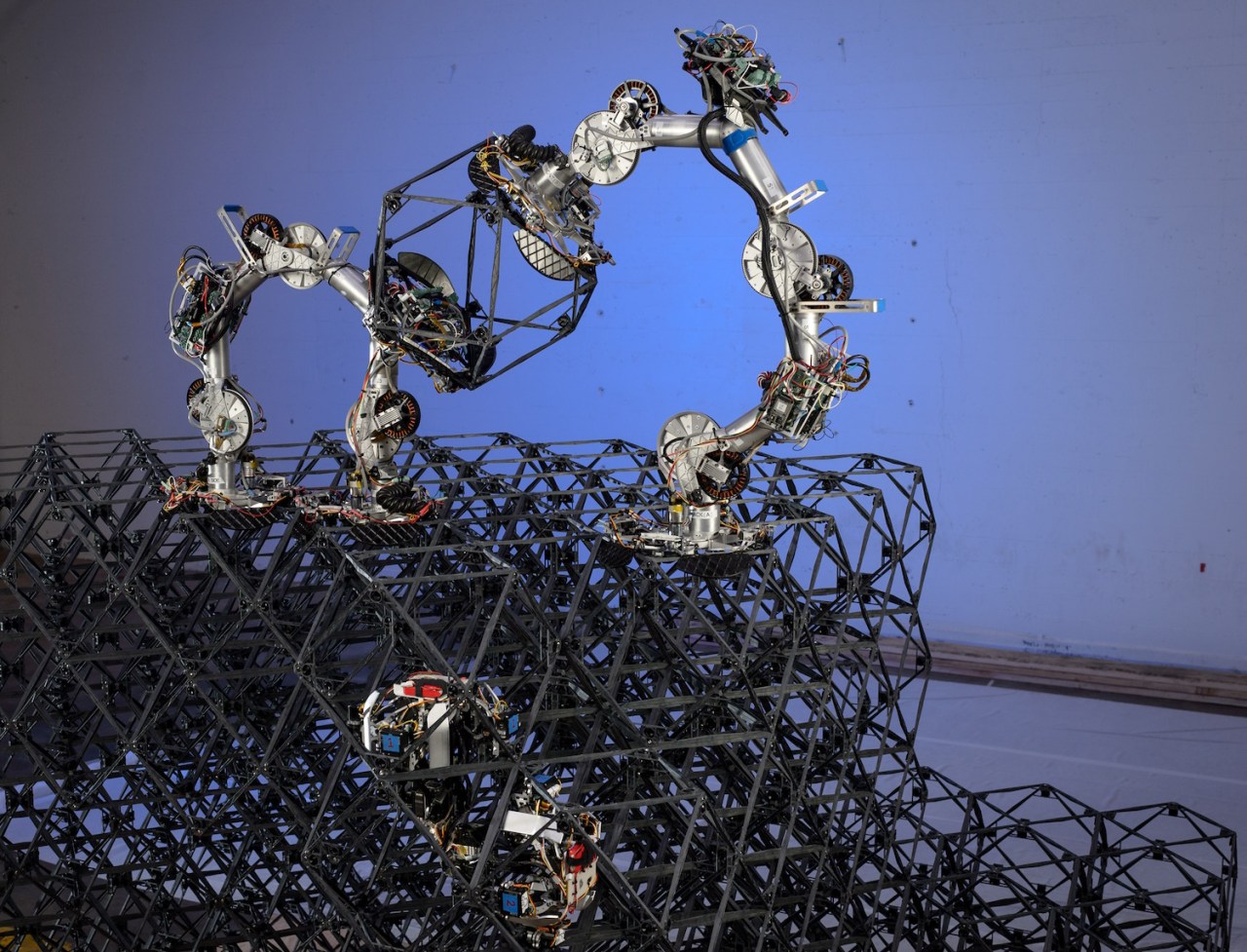As visions of human settlements on the Moon and Mars inch closer to reality, the challenge of construction in these unfamiliar environments has sparked a wave of innovative technological advancements. NASA’s latest breakthrough, detailed in a recently published paper in Science Robotics, introduces an ambitious project called ARMADAS—Automated Reconfigurable Mission Adaptive Digital Assembly Systems. This project showcases self-reprogrammable mechanical metamaterials that hold the potential to revolutionize how we construct habitats in space, illustrating a leap forward in off-planet human ingenuity.
The Concept: Building Structures That Build Themselves
At the heart of ARMADAS lies a fascinating approach to building via robotic systems that not only assemble structures but do so autonomously. The key players in this technological saga are voxels, cuboctahedral frames that serve as modular building blocks, and two distinct types of robots. One type resembles bipedal walkers, carrying voxels to their designated locations, while the other is a fastener bot that locks these pieces into place with precision. Christine Gregg, the lead author of the research, aptly summarizes the aim: to pave the way for robust habitats for humans in extraterrestrial realms.
Benefits for Space Exploration
- Adaptability: The unique design of the voxels allows assembly at various angles and maintains structural integrity. This makes them ideally suited for a range of applications in the harsh environments of the lunar surface or the Martian landscape.
- Remote Construction: ARMADAS can construct shelters and other infrastructures even before humans arrive, making it especially beneficial as we prepare for long-duration missions on other planets.
- Cost-Efficiency: By utilizing locally-sourced materials, Armstrong’s innovations can significantly reduce the logistical challenges and costs associated with transporting traditional construction resources from Earth.
How It Works: The Robotic Symphony
The assembly process is not only innovative but efficient. The two-legged walkers transport the building blocks while the fastener worm locks them in place. This allows the system to operate without requiring an overly complex sensory environment, which can be a game-changer in space scenarios where data availability may be limited. The robots can be adapted to utilize power sources found in situ, such as solar energy, further increasing autonomy and reducing dependency on Earth.
In their experiments, the team managed to assemble 256 voxels into a rudimentary shelter within just over four days. This timeframe highlights the potential for scaling up operations—imagine sending a swarm of these robotic builders a few months ahead of a crew to prepare simple habitats that could house astronauts when they touch down.
Exploring Future Possibilities
The future of ARMADAS is bright and opens up numerous avenues for exploration. Future iterations of these robots could incorporate faster, more efficient mechanisms and integrate various types of building materials to enhance the robustness of structures. Developing swarms of robots for larger projects could drastically reduce construction time, adhering to the adage that many hands make light work—a principle that extends to robotic systems as well.
Additionally, researchers are considering how to integrate functionalities into the structures during the assembly process—perhaps outfitting them with power systems or other utilities as they build. This dual function could streamline both construction and functionality, ultimately creating advanced shelters customized for human needs.
Conclusion: The Future of Space Construction is Here
NASA’s ARMADAS project signals a groundbreaking advancement in the field of robotic construction. By harnessing the power of self-assembling systems, we are taking our first steps toward becoming a multi-planetary species. With the ability to create structures autonomously and sustainably, the pathways to establishing human presence on the Moon and Mars are steadily becoming more feasible.
At fxis.ai, we believe that such advancements are crucial for the future of AI, as they enable more comprehensive and effective solutions. Our team is continually exploring new methodologies to push the envelope in artificial intelligence, ensuring that our clients benefit from the latest technological innovations.
For more insights, updates, or to collaborate on AI development projects, stay connected with fxis.ai.

